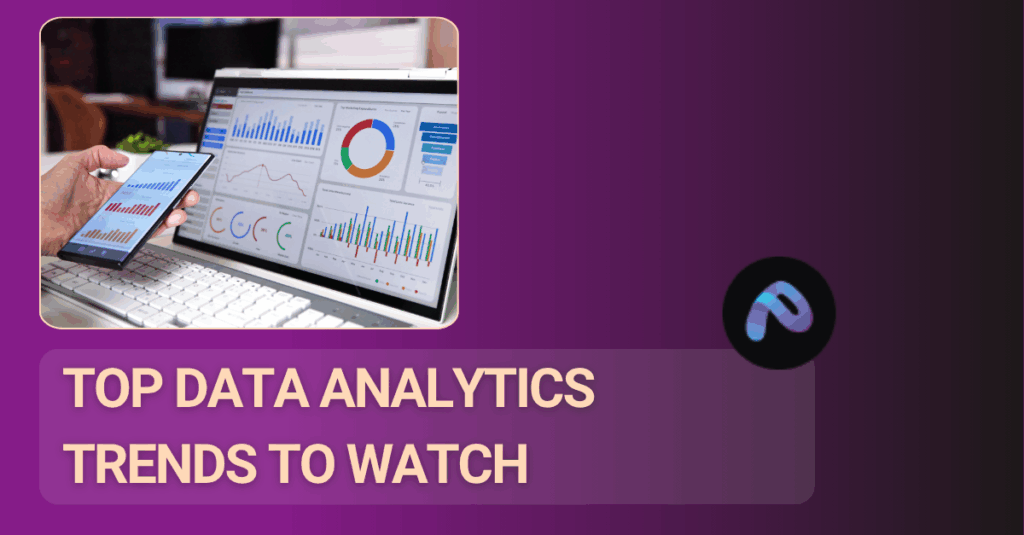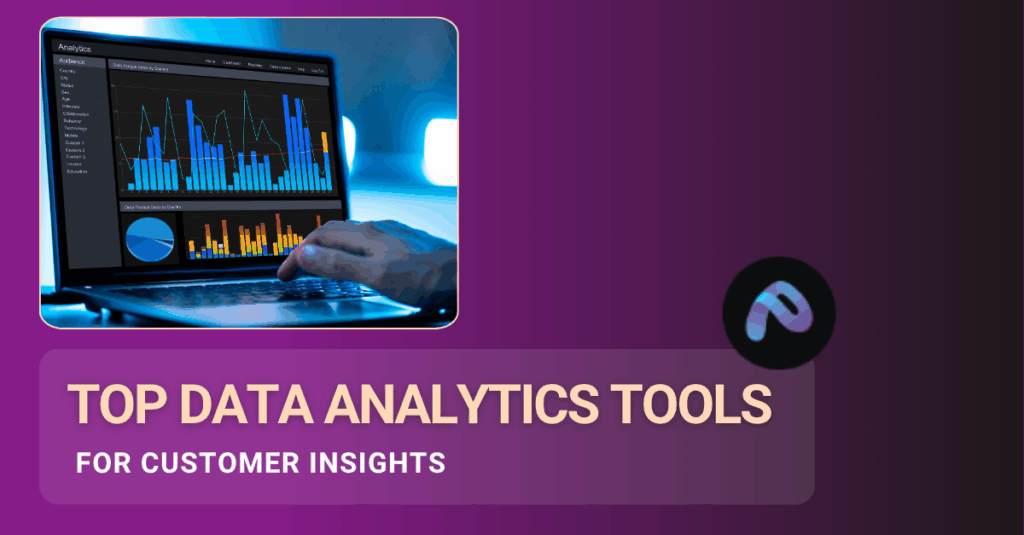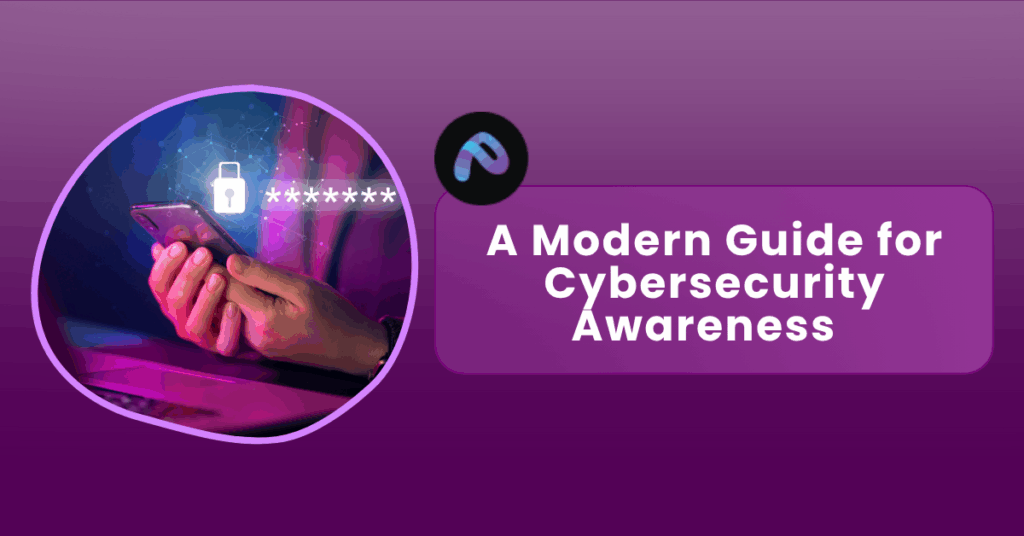As urban populations continue to grow expected to hit 6.7 billion by 2050, according to the United Nations cities are under immense pressure to become more efficient, sustainable, and responsive. Enter Smart Cities: urban environments leveraging data analytics, IoT, and AI to improve quality of life, optimize resources, and streamline governance.
This article explores the top data analytics solutions for smart cities, featuring real time applications, global case studies and market trends, providing a clear view of how analytics is redefining urban ecosystems.
1. What Is a Smart City?
A smart city uses digital technologies and data analytics to enhance performance, well being and reduce costs across critical infrastructures such as transportation, energy, healthcare, water and public services.
Key pillars of a smart city include:
- Real time data collection
- Sensor networks
- Predictive analytics
- Artificial intelligence/ML integration
- Citizen engagement platforms
Data analytics is the engine that processes raw sensor data into actionable intelligence.
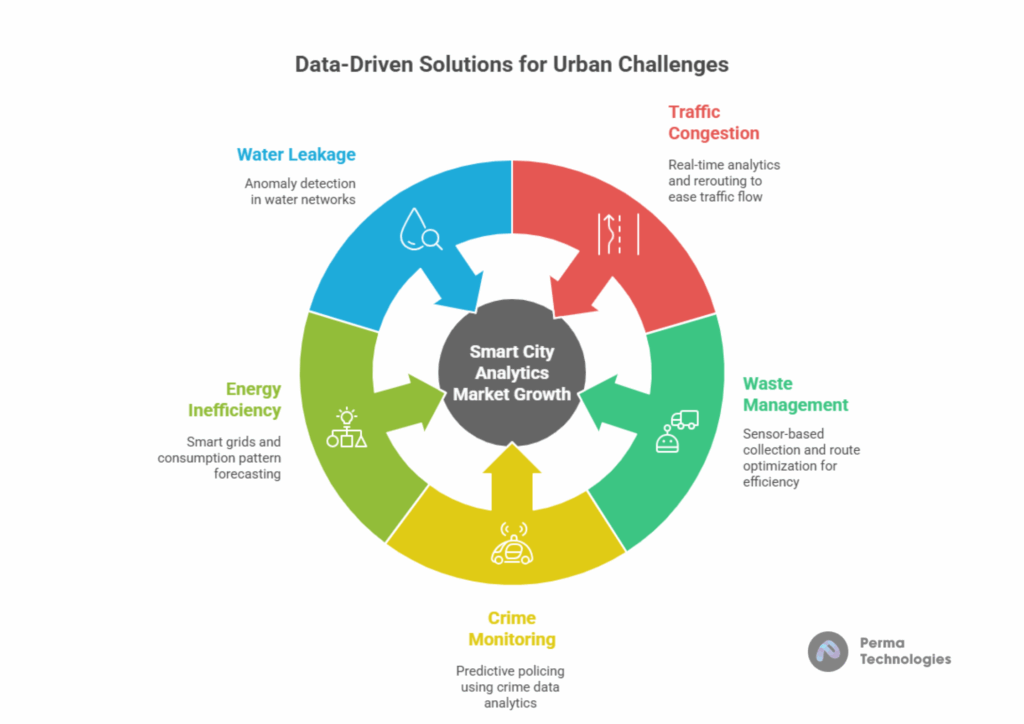
2. Why Data Analytics Is Critical to Smart Cities
Urban Challenges Solved Through Data:
| Problem | Data Driven Solution |
| Traffic congestion | Real time traffic flow analytics, rerouting |
| Waste management | Sensor based collection and route optimization |
| Crime monitoring | Predictive policing using crime data analytics |
| Energy inefficiency | Smart grid and consumption pattern forecasting |
| Water leakage | Anomaly detection in water networks |
According to MarketsandMarkets, the smart city analytics market is projected to grow from $28.6 billion in 2022 to $89.9 billion by 2027, at a CAGR of 25.6%. The demand is driven by the need for real time insights and automated decision making.
3. Top Data Analytics Solutions Empowering Smart Cities
A. Smart Traffic Management with Predictive Analytics
Use Case: Barcelona, Spain
Barcelona uses Artificial intelligence powered traffic flow systems that analyze real time vehicle data, adjust traffic lights dynamically, and provide alternative routing suggestions through its mobile app.
- Results: Reduced average travel time by 21%
- Technology: IoT sensors + predictive analytics + Google Maps API
- Tool Providers: IBM Intelligent Transportation, Siemens Mobility Analytics
Analytical Insight:
- Data collected from over 500 traffic sensors
- Uses Time Series Analysis to predict congestion
Machine Learning models forecast traffic spikes during events
B. Smart Waste Management Using Data Driven Routing
Use Case: Songdo, South Korea
Songdo integrates sensor equipped bins that monitor fill levels. A central data system routes garbage trucks only when bins are full.
- Impact: Reduced waste collection costs by 35%
- Platform: Bigbelly + smart analytics dashboard
- Data Types: Volume, weight, time to full, route heatmaps
Analytics Techniques:
- Spatial Data Analytics: Determines optimal routes
- Threshold based Alerts: Triggers based on fill percentage
C. Energy Optimization with Smart Grids and Artificial intelligence
Use Case: Amsterdam Smart City
Amsterdam’s Energy Atlas combines GIS and real time energy usage data to identify high consumption zones and recommend retrofitting strategies.
- Outcome: Energy usage dropped by 12% in target zones
- Key Tools: ArcGIS, Microsoft Azure Data Explorer, Power BI
- Tech: Artificial intelligence for consumption prediction, anomaly detection in grid usage
Analytical Layers:
- Cluster analysis for identifying high use households
- Demand forecasting to plan grid capacity
D. Environmental Monitoring with IoT + Big Data
Use Case: Chicago’s “Array of Things”
Deployed a network of sensors tracking air quality, temperature, humidity, and noise levels. The real time data feeds into public dashboards and scientific research platforms.
- Impact: Enabled urban heat mapping and asthma zone prediction
- Platform: AWS + Edge computing + R + Python + Tableau
- Output: Over 100,000 daily sensor readings analyzed
Insight:
- Data processed using streaming analytics
- Triggers public alerts when pollution crosses thresholds
E. Public Safety and Predictive Policing
Use Case: Los Angeles Predictive Policing
Using historical crime data, LA’s police force deploys predictive analytics to map crime prone areas and optimize patrol routes.
- Result: 13% drop in property crimes in mapped zones
- Data Sources: Past incident logs, location heatmaps
- Platform: Palantir Gotham, SAS Visual Analytics
Techniques:
- Regression models for crime prediction
- Geospatial clustering for hotspot detection
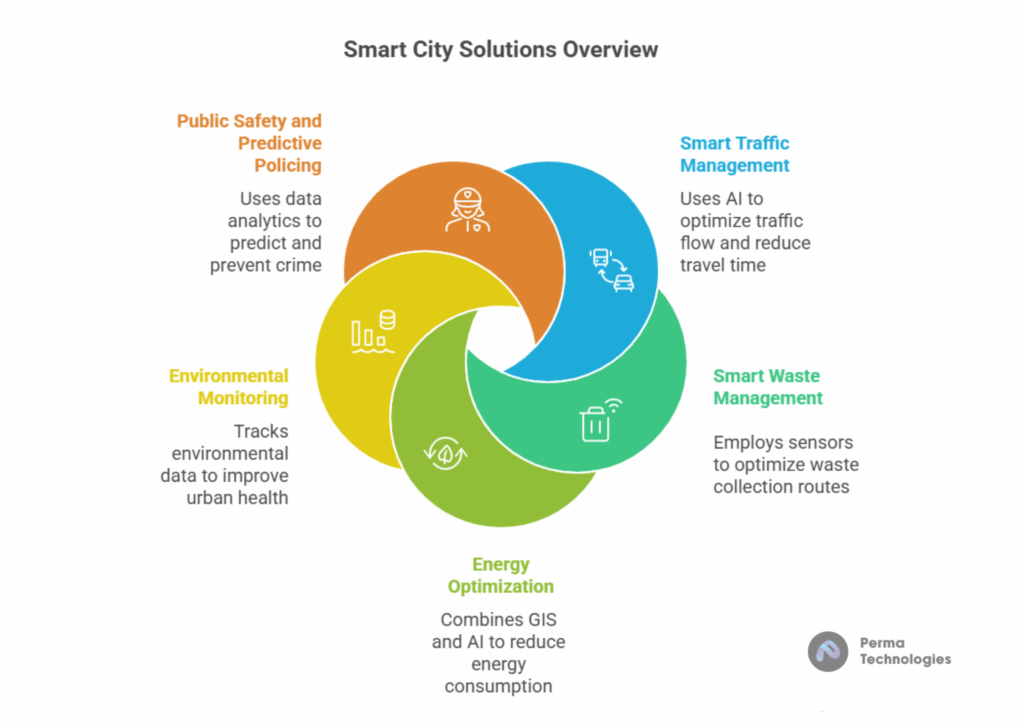
4.Real Time Data Analytics Tools Used by Smart Cities
| Tool Name | Description | Use Cases |
| Tableau / Power BI | Dashboards for decision makers | Energy, environment, governance dashboards |
| Apache Kafka | Real time data streaming | Traffic, weather, sensors |
| AWS IoT Analytics | Serverless analytics for sensor data | Waste, water systems |
| Google Cloud BigQuery | Scalable querying on massive datasets | Public safety, transportation |
| Esri ArcGIS | Mapping and spatial data analytics | Smart zoning, resource allocation |
| Microsoft Azure Synapse | Unified analytics + ML | Citizen behavior, operations monitoring |
Benefits of Data Driven Smart Cities
Operational Efficiency
Smart cities can cut costs by automating decisions. Example: New York saved $43 million/year in energy management alone via its smart building program.
Sustainability
With real time environmental analytics, cities reduce their carbon footprint and support green initiatives.
Citizen Engagement
Open data portals, such as London Datastore, allow citizens and developers to explore city data, improving transparency and co creation.
Resilience & Crisis Management
During COVID-19, cities like Seoul used real time mobility analytics to manage lockdowns and prevent crowding.
Challenges and Future Trends
| Challenge | Upcoming Trend/Tech |
| Data privacy concerns | Privacy preserving analytics, differential privacy |
| Infrastructure limitations | Edge computing, 5G enabled devices |
| Data silos | Interoperable data platforms, open APIs |
| Real time analytics at scale | Use of Artificial intelligence accelerators, federated learning |
Future Outlook:
By 2030, over 80% of cities in developed countries will deploy Artificial intelligence based analytics to manage infrastructure, according to Gartner.
Quick Recap: Top Solutions Matrix
| Area | Analytics Solution | Example City |
| Traffic | Predictive Traffic Artificial intelligence | Barcelona |
| Waste Management | Sensor based Routing | Songdo |
| Energy | Smart Grid Analytics | Amsterdam |
| Public Safety | Predictive Policing | Los Angeles |
| Environment | Sensor + Dashboard Alerts | Chicago |
Conclusion
Smart cities are no longer a futuristic idea they are data driven realities. From reducing congestion to improving safety, data analytics solutions are at the heart of modern urban innovation.Municipalities investing in analytics tools and Artificial intelligence infrastructure will be better positioned to serve their citizens, operate efficiently, and adapt to changing climates and populations.



